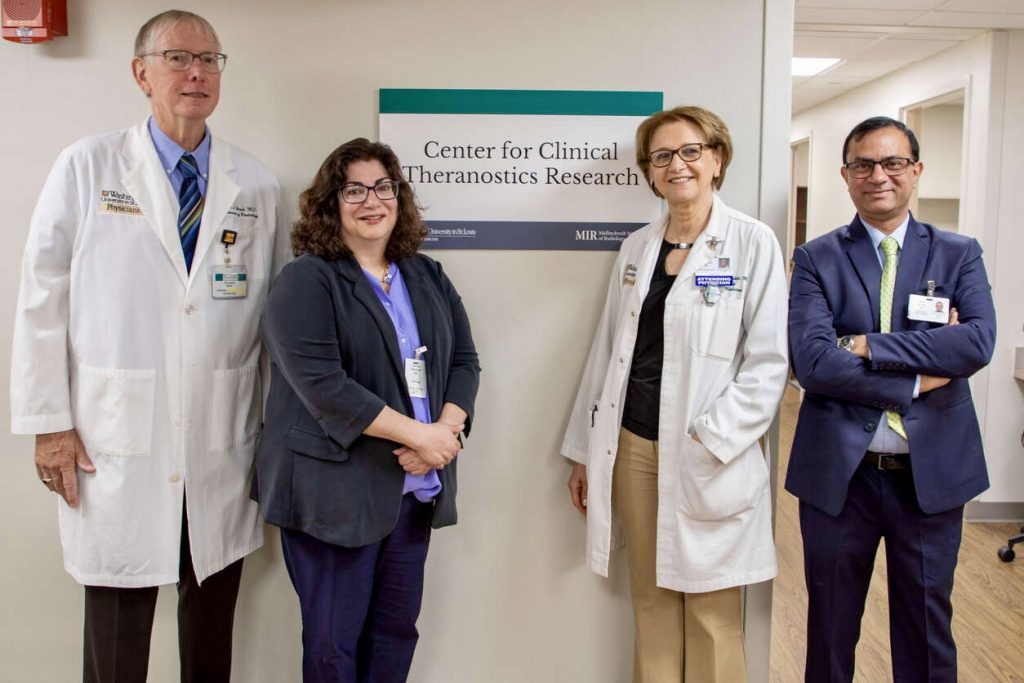In January 2022, Vikas Prasad, MD, PhD, was at the University Hospital of Ulm in Germany when he received an email from Richard L. Wahl, MD, then chair of MIR, asking him to take over the clinical theranostics program. Ten months later, Prasad joined the Division of Nuclear Medicine as an associate professor.
Theranostics, the combination of imaging and molecular radiotherapy, uses radiopharmaceutical therapies to treat cancer patients. According to Prasad, key components to a successful program include cutting-edge infrastructure, a comprehensive cancer center and innovative leadership. “I was mightily impressed by the pioneers in the field of nuclear medicine within MIR,” said Prasad, referring to Wahl, Barry A. Siegel, MD, and Farrokh Dehdashti, MD. “There was no way I could have selected any other institution to start my ‘new life’ in the field of theranostics.”

WashU Medicine’s theranostics program, which is an SNMMI-designated Radiopharmaceutical Therapy Center of Excellence, is a joint venture between MIR’s Division of Nuclear Medicine and the Department of Radiation Oncology. “I am extremely satisfied to see how quickly our residents and faculty have learned the basics of theranostics of neuroendocrine tumors, prostate cancer and more,” said Prasad. He adds that the theranostics tumor board that has been running successfully since July of this year is a unique example of multidisciplinary care.
Prasad, whose research primarily focuses on neuroendocrine neoplasms and prostate cancer, said by unraveling the molecular makeup of the malignant tissue, theranostics is driving precision oncology to the next level. “No other branch offers this unique possibility to visualize the targets on cancer cells and quantify the right dose to achieve appropriate anticancer effect.”
Looking to the future of cancer treatment, Prasad said conventional chemotherapy and blanket treatment options will slowly pave the way for molecular characteristics-driven therapy. “Pathology and nuclear medicine will become integral to the tumor characterization, ultimately becoming central to all multidisciplinary tumor boards,” he said. Within a decade, he expects theranostics to move forward in the sequencing of treatment. “We will be able to treat many more solid and hematological malignancies, not only in adults but also in pediatric patients in five to eight years.”
Published in Focal Spot Winter 2024 Issue

